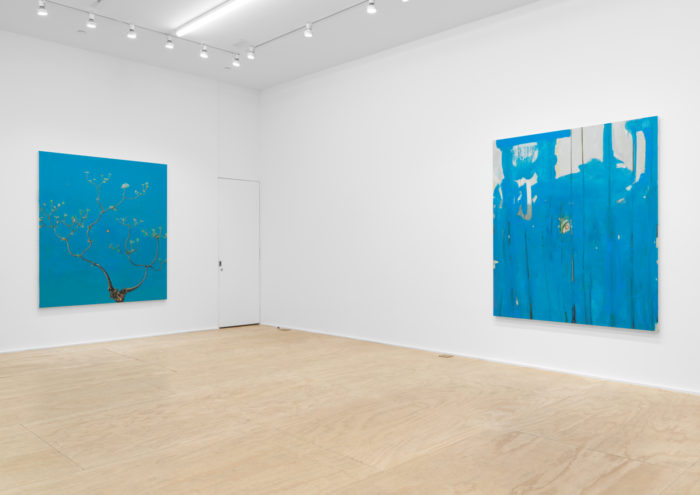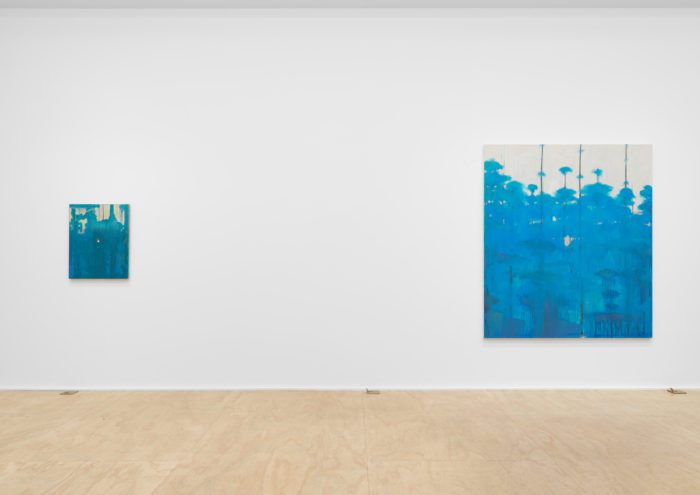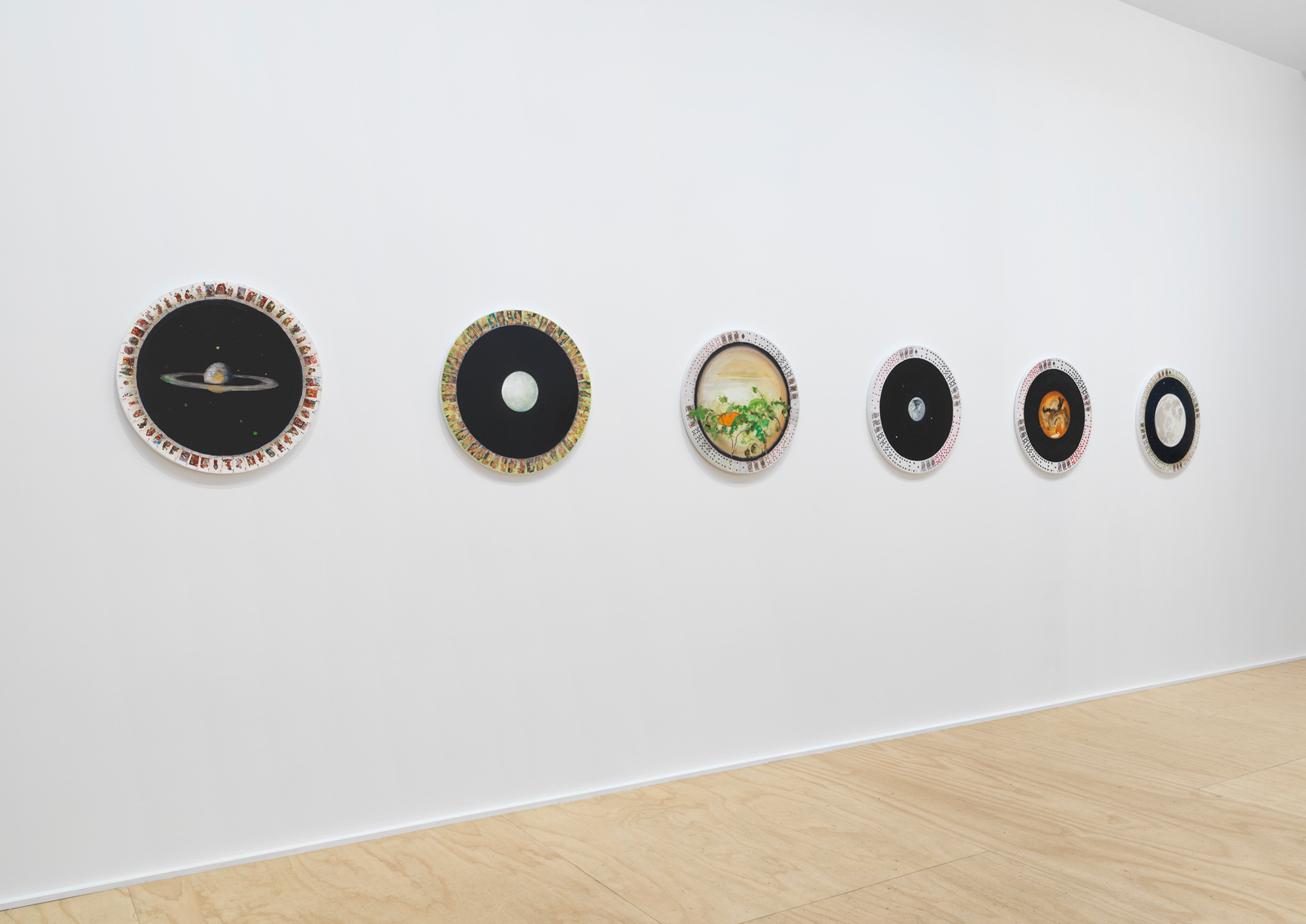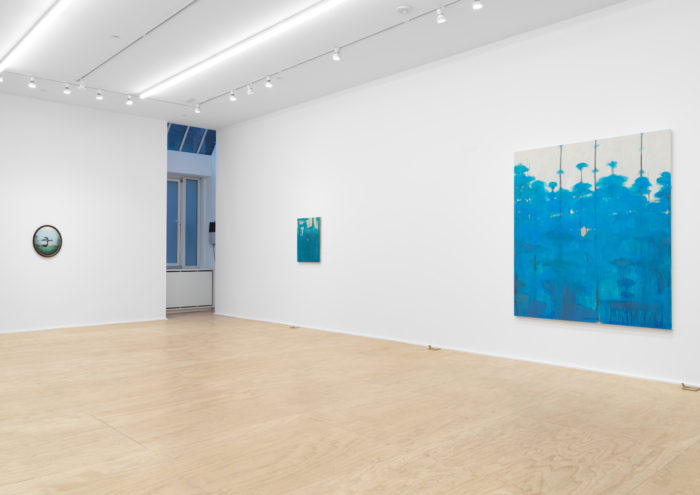
Eva Presenhuber is currently showing an exhibition of new works by the American painter Verne Dawson. This is the artist’s fifth solo show with the gallery. A concurrent exhibition of new paintings will take place at Gavin Brown’s Enterprise from March 3 to April 14, 2019.
Dawson’s approach to painting is that of an anthropologist studying ancient concepts of time and space, how they have affected humankind throughout its social and technical evolution, and in what way they are still present in our contemporary, everyday culture. He bridges the gap between past and present by dealing with astronomy, numerology, and myth, as the ideas and stories behind these fields continue to impact the way we perceive and experience life. The rotation of the solar system influences the seasons and thus defines the calendar, independent of whether we use a smartphone, a wall calendar, or monumental structures like Stonehenge to measure time.
Furthermore, many of the stories recounted today, in the form of novels, films, or television shows, are influenced by myths dating back to ancient cultures from around the globe. In Dawson’s paintings, these vast expanses of time collapse into scenes illustrating contemporary, as well as ancient representations of astronomy and mythology. Resembling fairy-tales, these often bucolic scenes are painted in a naive style referring to classical compositions, symbols, and modernism. The lightness of his balanced compositions, which are often tongue in cheek, expresses the pleasure found in the act of painting.

This exhibition presents two series of paintings: Days of the Week and The Ivory-Billed Woodpecker. Days of the Week focuses on the link between the planetary system and card games representing the calendar. The Ivory-Billed Woodpecker is essentially an elegy for a bird that has been the holy grail of ornithology for the past 100 years since it remains unclear whether it still exists or has become extinct.
As the title suggests, Days of the Week it is a series of seven paintings. They are all round and each depicts one of the classical planets representing days of the week (in accordance with antique mythologies these include the moon and the sun). According to legend, the ancient Egyptians invented playing cards, and especially tarot cards that are still used to this day in clairvoyant reading ceremonies, in order to preserve their knowledge of the calendar. Decks of cards comprising 52 cards in 4 suites represented the weeks and the seasons of the year, thereby becoming a popular archive of ancient knowledge. The Egyptians anticipated the safest way to save and pass on their astronomical findings was to hand them down in the form of a vice – namely playing cards. Accordingly, Dawson selected cards to represent the planets: Friday (derived from lat. Venus, German Freida, or vendredi in French) is encircled by a deck of pin-up ladies; Saturday (from Saturn) has a deck of Santa

Claus cards, noting the ancient festival of Saturnalia as the predecessor of Christmas; and Sunday (originating from the Sun) is the largest panel. It marks the beginning of the week in many traditions, which is why a deck of cards representing stellar constellations surrounds this central panel. The planets are painted in colors that could have been employed in a romantic landscape painting, while the playing cards link the mysteries of the cosmos to the everyday.
The Ivory-Billed Woodpecker is a series of five works of which the oldest, a small oval painting depicting the bird in flight, dates back to 30 years ago. Dawson painted it in the hope that the bird still existed. Another early work from 1994 is named after the bird, even though it is absent in the painting. Since the bird is most likely extinct, absence is the motif of three other larger paintings. They are centered on a round mandala portal or mirror, reflecting how the bird connects the different realities in which it continued to exist.

Through their reflection of myth, nature, and the evolution of humankind, Dawson’s paintings open up enormous spans of time, linking the development of civilization to the cosmos. The surreal humor implicit in this juxtaposition of ages makes the artworks appear unrealistic while granting the viewer the power to be immersed in the portrayed scenes and concepts.
Verne Dawson was born in 1955 in Meridianville, AL, and lives and works in New York, NY. Solo exhibitions include Le Consortium, Dijon, France, 2006; Camden Arts Centre, London, UK, 2005; and Kunsthalle Zürich, Zurich, Switzerland, 2002. Dawson‘s work has also been featured in significant international events including the 2011 Yokohama Triennial, Yokohama, Japan; the 2010 Whitney Biennial, New York, NY; and the 2006 Lyon Biennial, Lyon, France.
Mar 08, 2019 – Apr 21, 2019
Verne Dawson
Paintings
Eva Presenhuber, New York
Writing via press release and photographs courtesy of Eva Presenhuber, New York.




